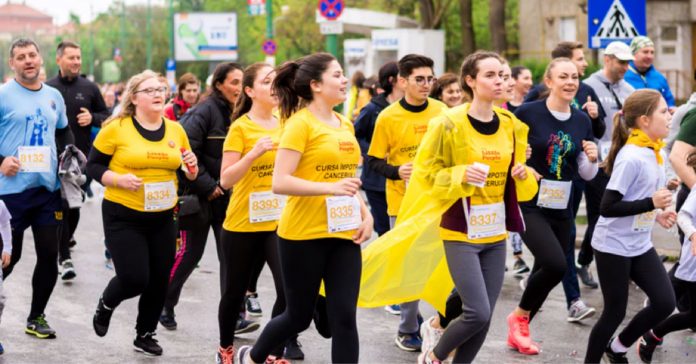As the name implies, endurance sports are athletic activities involving high-intensity exercise performed over a long time interval. It can be long-distance running, swimming, cycling, or a combination of the three. Even boxing, rowing, soccer, and basketball are categorized as endurance sports. Whether you are a beginner or a seasoned veteran considering a new discipline in endurance sports, it is essential to know some important points before embarking on this challenging activity. Here, a few vital points about endurance will be shared to ensure that you reach your pursuit of sports excellence.
1. Set Your Fitness Goals
Training for endurance sports is not all about building up stamina. It also involves developing muscle strength, coordination, and agility. Whether you prefer training with a coach or solo, a training planning platform and analysis for running, cycling, swimming and more can help you identify key physical areas to develop or improve and make you perform better. Your physical form, intensity, and effort can be measured, monitored, and predicted using a coaching or training platform. This way, you have measurable data that can help you set realistic and achievable fitness or athletic goals.
2. Track Your Activity Duration
In a marathon, triathlon, or any other endurance sport, the duration of training can vary with every sport-specific event and the athlete’s fitness level. For example, a novice marathoner who wants to participate in a 10-km race would need to set their target to finish the race within one hour. For the training program, the longest and most intense workout the athlete can do is seven to eight kilometers or a 40 to 45-minute run. The ideal preparation for any event is to have training durations lower than the actual race. Running the full course regularly during your training can jeopardize the recovery time of your muscles until the race day. It can often lead to faster burnout during the race. However, when you alternate your pace and activity duration and set training goals close to the full race duration, you are conditioning your body to be ready to run further and avoid sudden exhaustion.
Coaches would recommend a “taper” period of one to two weeks before the race day. This period is where your training volume gradually lessens to allow for full muscle recovery and make you feel revitalized during the race. Your weekly plan should involve a tempo run (5 to 5.5 km) on the first day, an easy run (2 km) on the second day, and an interval run (4 km) on the third day. The fourth day is a rest day to allow your muscles to recover. Continue on the fifth day with another 5.5-km tempo run and follow it up on the sixth day with a long run (7-8 km). End your training week with a rest day. Your taper week can still follow the same routine, but you have to rest 1-2 days before the race. If you still feel the need for an activity, it’s best to stick with one that requires little physical exertion like golf.
3. Understand Your Metabolic Systems
Aside from planning the development of key muscle groups and the duration of the training, choosing a specific time where your body’s energy reserves are utilized is also vital in endurance sports preparations. Metabolism is how the body utilizes energy to fuel movement, and there are two metabolic systems that our body uses: the aerobic and anaerobic systems.
The aerobic system is the dominant metabolic system used by our body. The process involves the use of oxygen to process glucose from food to form a compound called acetyl coenzyme A (acetyl-CoA), which is then converted to a compound called adenosine triphosphate (ATP) – the molecule used for energy. Since the process involves oxygen, part of your preparation and training should be focused on your lungs, which is vital for inhaling and absorbing oxygen. Cardio exercises help strengthen the heart to improve blood circulation and efficiently deliver oxygen throughout the body.
The anaerobic system is utilized by our bodies to provide short but powerful bursts of energy, which plays a crucial role during final sprints to the finish line. As the system’s name implies, energy is processed in the absence of oxygen. At higher intensities of physical activity, the delivery of oxygen gets insufficient as the muscles twitch faster. Thus, the body resorts to processing additional energy without the need for oxygen to compensate for the heightened activity. Sprint training is an excellent way of conditioning your body to readily utilize the anaerobic metabolic system.
4. Pay Attention to Muscle Strength
As mentioned earlier, platforms, applications, and trainers can help you strategize your fitness goals and programs to target specific muscle groups. Muscle strength is one target area that deserves more focus. It differs from muscle power, which is the force your muscle exerts over time. Muscle strength refers to the maximum force you can exert. It comes in handy during sub-maximal intensity movements that are performed during the sport. Muscle strength development aims to improve performance without affecting body weight.

5. Do Not Neglect Mental Stamina
It’s not just physical stamina that endurance sports athletes need to develop and improve. The power of mental toughness is something that should not be ignored. A strong “mind over matter” resolve can drive athletes to push past their limits by resisting sensations and signals of fatigue, which can prompt the body to slow down or stop.
Mental stamina or toughness can be developed over time, through regular exposure to fatigue during training. It is most effective when applied to the specific event you will be competing in. It doesn’t make sense to develop mental stamina for an 800-m race if you are a marathoner.
6. Maintain Good Hydration Practice
Athletes are widely aware of the essential role of proper hydration in endurance sports. These activities require high-intensity exercises that can push your body to sweat a lot and lower your electrolyte levels. The danger of dehydration is real not just in endurance sports but in any activity involving profuse sweating. Before the exercise or competition, athletes need to have enough fluid reserves and normal electrolyte levels. Often, drinking a few glasses of water and consuming fruits and vegetables with high water content 8-12 hours before exercise or competition is sufficient.
Too much water before an athletic event is not advised due to possible dilution of sodium during urination, increasing the risk of hyponatremia. Hydration should continue during exercise, especially if it lasts more than 60 minutes. Ideally, athletes should drink 90 to 240 ml of a 6-8% carbohydrate-electrolyte beverage every 10 to 20 minutes. After exercise, make sure to replenish the rest of the lost electrolyte. Coaches and trainers recommend taking 600 to 720 ml of fluid for every pound of body weight lost during the exercise.
The competition in endurance sports can be stiff. Also, the training that athletes undergo is physically and mentally demanding. Nevertheless, with the right training plan, information, and aid from technology, athletes can achieve excellent performance and personal records. So don’t just train hard; train smart as well.


